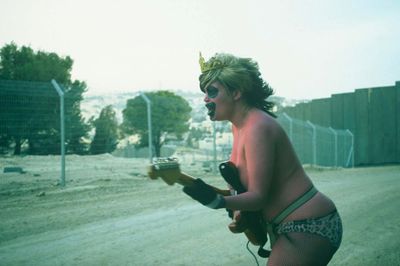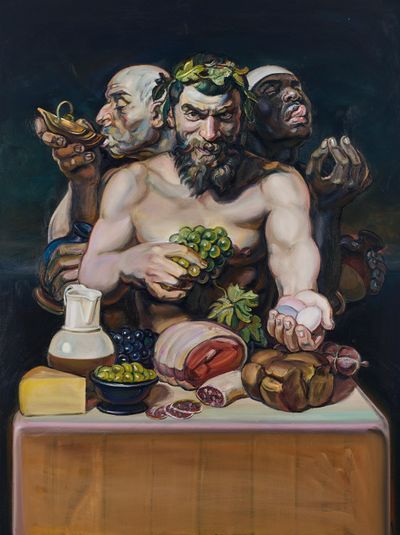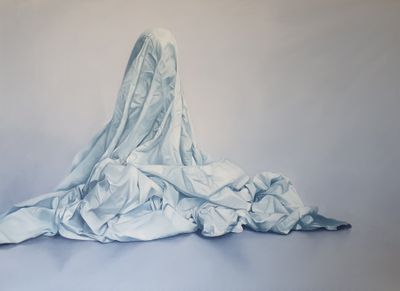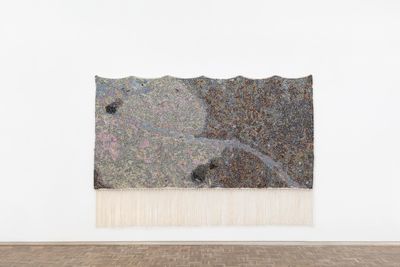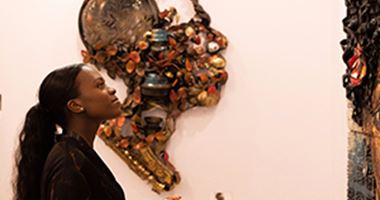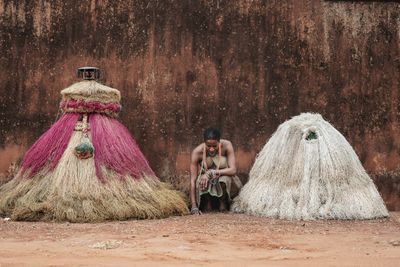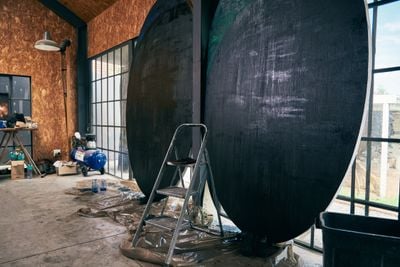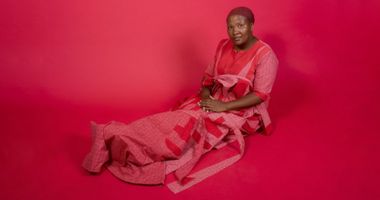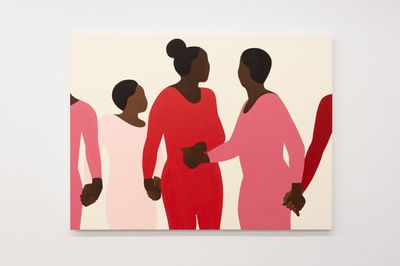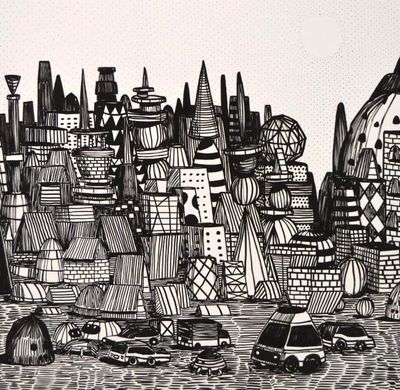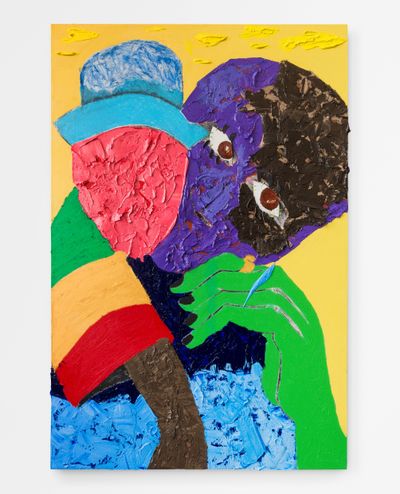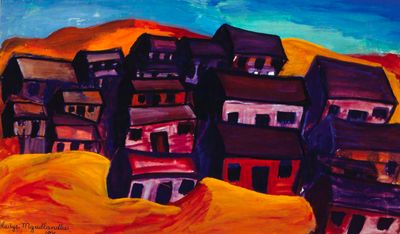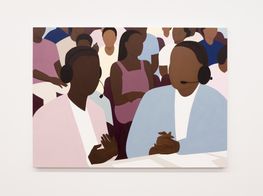Cape Town Art Week 2022: Exhibitions to See
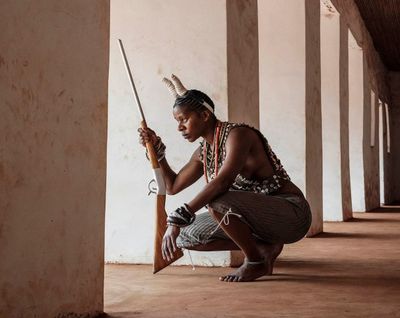
Nandipha Mntambo, DAN I (2021). Photographic print on cotton rag paper. 162 x 111 cm. Courtesy the artist.
Hosted at the Cape Town International Convention Centre, Cape Town Art Fair returns (18–20 February 2022) this year as the largest contemporary art fair in Africa, with 107 galleries presenting online and offline for the fair's 9th edition. For those in the city, here is a selection of exhibitions to see.
Tracy Rose: Shooting Down Babylon
Zeitz MOCAA, Waterfront South Arm Rd
17 February–28 August 2022
Shooting Down Babylon follows South African performance artist Tracy Rose's work since 1996, which has consistently investigated the aesthetics of violence and the body as a site of protest.
Borrowing its title from an iconic installation that addresses rituals of exorcism and cleansing in non-Western communities, the exhibition will feature film, sculpture, photography, and performance with emphasis on Rose's interest in the body as a discursive site.
Johannes Phokela: Only Sun in The Sky Knows How I Feel (A Lucid Dream)
Zeitz MOCAA, Waterfront South Arm Rd
28 October 2021–29 May 2022
Johannes Phokela's figurative paintings hold a mirror to contemporary society by placing modern-day characters in historical settings, rendered using traditional pictorial techniques as an exploration of social mores and colonial legacies.
In the oil on canvas, Porch Resolution (2021), viewers are cast as accomplices to a feasting scene, invited to partake by a man who extends a hand, while a Black figure in the backdrop contemplates the financial rewards of complacency.
IIené Bothma: All That Remains
99 Loop Gallery, 99 Loop St
27 January–26 February 2022
Weaved, sculpted, or painted, IIené Bothma's material investigations depict solitary figures concealed behind translucent fabrics. Struggling or complacent, the bodies thread a fine line between coming apart and holding it together
All That Remains mourns the passage of time and the fluidity of our relationships. Traces of the past are recovered in oils on canvas like Remnant II (2021), a quiet body draped in light blue fabric, evoking the solitude of the individual and the fragility interpersonal connections.
Wim Legrand: Blue Moon
99 Loop Gallery, 99 Loop St
27 January–26 February 2022
Drawing from cartoons, pop culture, and traditional North-European painting, Wim Legrand's peculiar characters wear unsettling expressions that reflect the anxiety that permeates a technological age.
Resembling protagonists in a dystopian still life, the acrylic on canvas Blue moon (2021), at once memorable and mundane, depicts a wireless earbud watching television against a barren pink landscape.
Igshaan Adams: skarrelbaan
blank projects, 10 Lewin St
12 February–19 March 2022
Igshaan Adams' dense tapestries derive their motifs from satellite images that capture individual migrations and collective histories.
Across large-scale weavings and installation, works in skarrelbaan are made to evoke 'desired lines', or pathways that traverse politically charged spaces with emphasis on social and economic divides introduced by the South African apartheid in 1948.
In the wall tapestry Langa (2021), a dense forest embedded with glass, rope, chain, beads, and bones is marked by a large X painted yellow, alluding to arrival or imaginary destinations.
Ian Banja
Cape Town Art Fair, eclectica contemporary
18–20 February 2022
Ian Banja's pointed portraits tell the story of people and places from the artist's daily encounters, which become transformed into vivid tableaus enlivened with surrealist and art historical references.
At Cape Town Art Fair, acrylics on canvas like Fallen Into An Abyss (2021) will be on show. In the latter, a young man wearing a defiant expression is seated besides a small portrait connecting the youth's experience with the agonising figure in Edvard Munch's The Scream (1893).
Nandipha Mntambo: Agoodjie
Everard Read, Ulundi House, Portswood Square
2–8 February 2022
Expanding on a practice that begins with the body and its metamorphosis, Agoodjie tells the story of an army of women warriors who once guarded the kings of Dahomey. While actively fighting at the front, they would often feign helplessness to catch their enemies by surprise.
For the exhibition, Mntambo recreated the attire worn by the Adoodjie, which she vested on her journey to the Royal Palaces of Benin. There, she met with modern day historians and custodians of historical narratives, at once embodying and returning forgotten lives into the present.
Nandipha Mntambo: Transcending Instinct
Southern Guild, Silo 5, Unit 5B
16 February–8 April 2022
Known for rendering traditional African figures and cowhide sculptures moulded after the human figure, Nandipha Mntambo's first solo exhibition with Southern Guild will venture into functional sculpture for the first time.
Recovering early forms like the hump shape from hut sculptures like uMcedo (2009), works on display will include large leather chairs and hanging leather-strip stools that establish new corporal relations between animal and man.
Thenjiwe Niki Nkosi: Landings
Stevenson, 160 Sir Lowry Rd, Buchanan Building G
12 February–19 March 2022
Known for pared-down abstractions and pastel portraits, South African American artist Thenjiwe Niki Nkosi's paintings arrive to Cape Town for the first time for Nkosi's second exhibition with Stevenson.
Made during lockdown, referencing crisis, the artist looks into the different meanings of safety and ground across geometrical paintings and portraits of people in conversation rendered in muted tones.
The same pastel shades that evoke comfort permeate Nkosi's scenes with an air of uncertainty as with the oil on canvas All Around (2021), in which five Black girls in pink leotards glance over their shoulders, hands joined in solidarity.
MOTELSEVEN, Conform, Dion Cupido: Streetsmart
WORLDART, 54 Church St
3–25 February 2022
Featuring three local artists from the street art scene, Streetsmart gathers anime-style figures by MOTELSEVEN, bold futuristic cityscapes by Conform, and sombre portraits by Dion Cupido, whose distinct figurations incorporate techniques from gang graffiti.
Notable suggestions charting sustainable urban environments can be sighted in the marker on canvas Robotronic Zone (2022), in which notes of traditional African architecture are integrated into the dense cityscape besides robots and self-driving cars.
Lwando Dlamini: Learning How to Be Less Afraid Brave
EBONY/CURATED, 67 Loop St
9 February–26 March 2022
South African artist Lwando Dlamini's second exhibition with EBONY/CURATED will find the painter stretching into unknown territories as he learns to create fearlessly. Featuring new paintings and one installation, the exhibition investigates the transcending of aesthetic boundaries across colour, texture, and form.
In the blend of oil, charcoal, thread, pastels, and oil sticks, LOVERS AND FRIENDS (2021–2022), the contemplative figure appears as a patchwork assemblage of bright palettes and shapes. Adorning red, yellow, and green stripes on his sleeve, he evokes the liberation associated with the Pan-African flag.
When Rain Clouds Gather: Black South African Women Artists 1940–2000
Norval Foundation, 4 Steenberg Rd
9 February 2022–9 January 2023
When Rain Clouds Gather bring together the works of 40 Black women artists from the early modern period to contemporary times to highlight their contributions to art and society.
Recurring concerns emerge across the 120 works on display, addressing the 1948 appartheid, the 1980s state of emergency, and the legislative emancipation from colonial rule, including documentations of communal organisation and Black womanhood.
Recreating entangled political landscapes, oils on canvas like Gladys Mgudlandlu's House in the hills (1971) depicts the oppressive structures of urban housing, which replaced traditional African homesteads, standing in as a physical reminder of cultural erasure. —[O]

